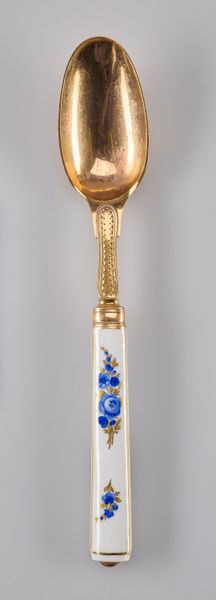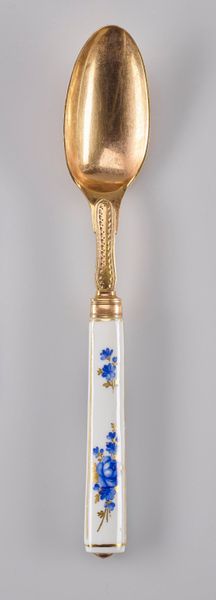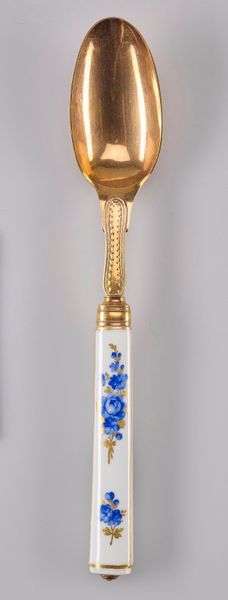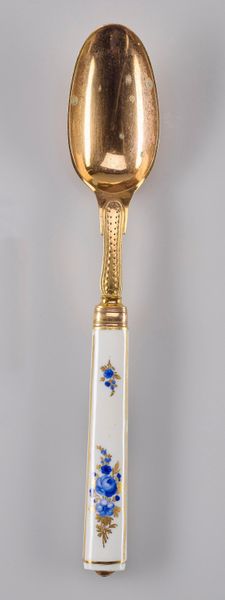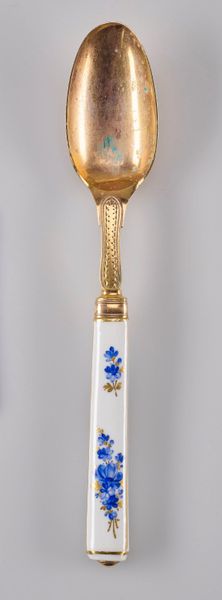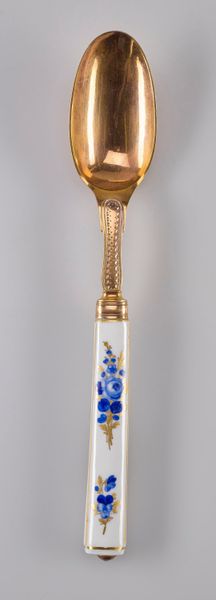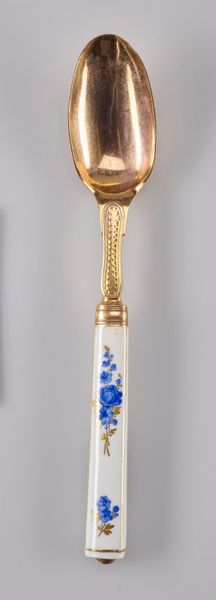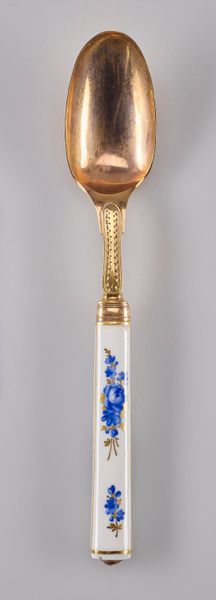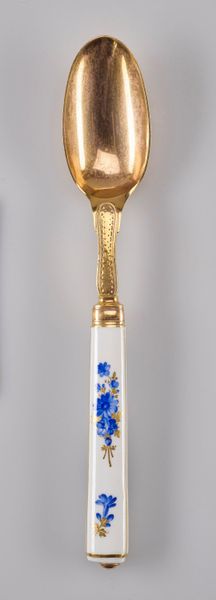
ceramic, porcelain
#
ceramic
#
porcelain
#
decorative-art
Copyright: Public Domain
Curator: Here we have a “Spoon”, crafted around the 18th century by the Meissen Porcelain Factory, currently residing in the Minneapolis Institute of Art. Editor: Immediately striking is the tension between the mundane function of a spoon and the obviously precious materials. The reflective quality of the golden bowl juxtaposed against the crisp porcelain handle creates such an alluring dissonance. Curator: Absolutely. The use of Meissen porcelain for a utensil elevates a daily object to an item signifying wealth and social status, a deliberate display of affluence tied to European aristocratic dining culture. The spoon is more than a simple object, but rather an emblem of access. Editor: Note, too, how the delicate floral patterns echo classical forms but also create a hierarchy. The bowl dwarfs the rest and steals the scene. Semiotically speaking, what do you see when the holder is clearly less ornate than that which holds? What meanings emerge? Curator: That visual dynamic might signify a rigid societal structure of 18th-century Europe. The elite literally and figuratively ‘held’ the laboring classes, expressed through the ornamentation of even the smallest domestic objects. Such ostentation, given its specific historical location, could then be understood as an indicator of colonial power. Editor: Fascinating, I had considered it to signify a different set of power dynamics but the visual echoes your analysis certainly supports such a claim. However, do you believe that this particular instance signifies more than merely what can be plainly identified through the class relations and history we know occurred during this period? Or are the visual materials limited in what they can ultimately offer regarding novel meanings? Curator: Certainly. Even in decorative art, we can find threads connecting to the exploitation inherent in porcelain production and its relationship with global trade at the time. These kinds of material cultures are vital when considering global power and how this can reflect down into mundane everyday items like utensils. Editor: And this subtle complexity—material beauty overlaying complex networks of socio-economic factors—reveals just how much of our world remains invisibly encoded within the simplest object. Curator: It’s precisely this awareness of intertwined global, social, and personal dynamics that encourages an enriched experience.
Comments
No comments
Be the first to comment and join the conversation on the ultimate creative platform.
